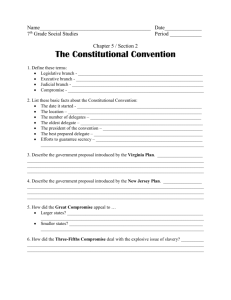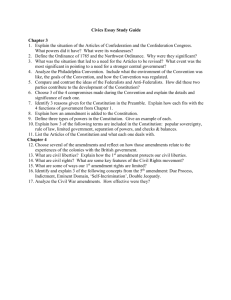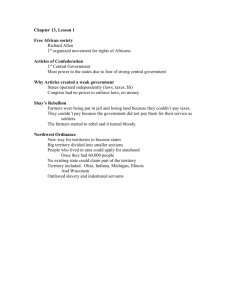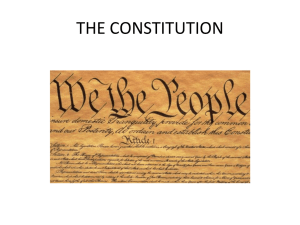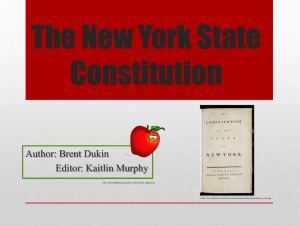LWVUS Amendment Study Basics
advertisement
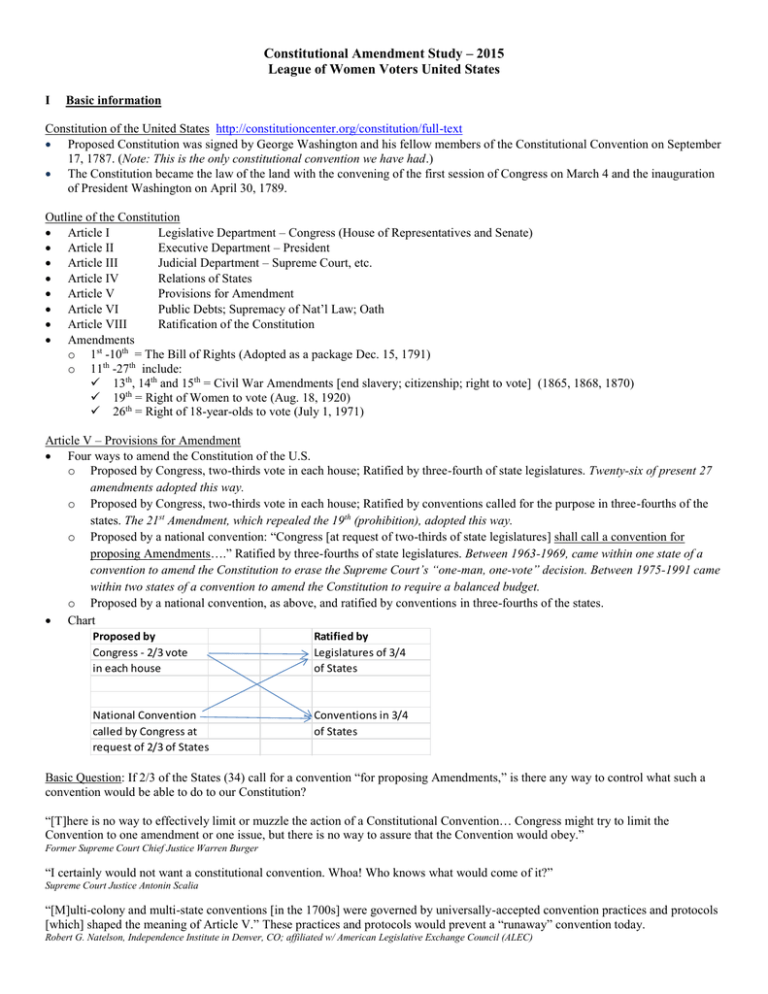
Constitutional Amendment Study – 2015 League of Women Voters United States I Basic information Constitution of the United States http://constitutioncenter.org/constitution/full-text Proposed Constitution was signed by George Washington and his fellow members of the Constitutional Convention on September 17, 1787. (Note: This is the only constitutional convention we have had.) The Constitution became the law of the land with the convening of the first session of Congress on March 4 and the inauguration of President Washington on April 30, 1789. Outline of the Constitution Article I Legislative Department – Congress (House of Representatives and Senate) Article II Executive Department – President Article III Judicial Department – Supreme Court, etc. Article IV Relations of States Article V Provisions for Amendment Article VI Public Debts; Supremacy of Nat’l Law; Oath Article VIII Ratification of the Constitution Amendments o 1st -10th = The Bill of Rights (Adopted as a package Dec. 15, 1791) o 11th -27th include: 13th, 14th and 15th = Civil War Amendments [end slavery; citizenship; right to vote] (1865, 1868, 1870) 19th = Right of Women to vote (Aug. 18, 1920) 26th = Right of 18-year-olds to vote (July 1, 1971) Article V – Provisions for Amendment Four ways to amend the Constitution of the U.S. o Proposed by Congress, two-thirds vote in each house; Ratified by three-fourth of state legislatures. Twenty-six of present 27 amendments adopted this way. o Proposed by Congress, two-thirds vote in each house; Ratified by conventions called for the purpose in three-fourths of the states. The 21st Amendment, which repealed the 19th (prohibition), adopted this way. o Proposed by a national convention: “Congress [at request of two-thirds of state legislatures] shall call a convention for proposing Amendments….” Ratified by three-fourths of state legislatures. Between 1963-1969, came within one state of a convention to amend the Constitution to erase the Supreme Court’s “one-man, one-vote” decision. Between 1975-1991 came within two states of a convention to amend the Constitution to require a balanced budget. o Proposed by a national convention, as above, and ratified by conventions in three-fourths of the states. Chart Proposed by Congress - 2/3 vote in each house Ratified by Legislatures of 3/4 of States National Convention called by Congress at request of 2/3 of States Conventions in 3/4 of States Basic Question: If 2/3 of the States (34) call for a convention “for proposing Amendments,” is there any way to control what such a convention would be able to do to our Constitution? “[T]here is no way to effectively limit or muzzle the action of a Constitutional Convention… Congress might try to limit the Convention to one amendment or one issue, but there is no way to assure that the Convention would obey.” Former Supreme Court Chief Justice Warren Burger “I certainly would not want a constitutional convention. Whoa! Who knows what would come of it?” Supreme Court Justice Antonin Scalia “[M]ulti-colony and multi-state conventions [in the 1700s] were governed by universally-accepted convention practices and protocols [which] shaped the meaning of Article V.” These practices and protocols would prevent a “runaway” convention today. Robert G. Natelson, Independence Institute in Denver, CO; affiliated w/ American Legislative Exchange Council (ALEC)

